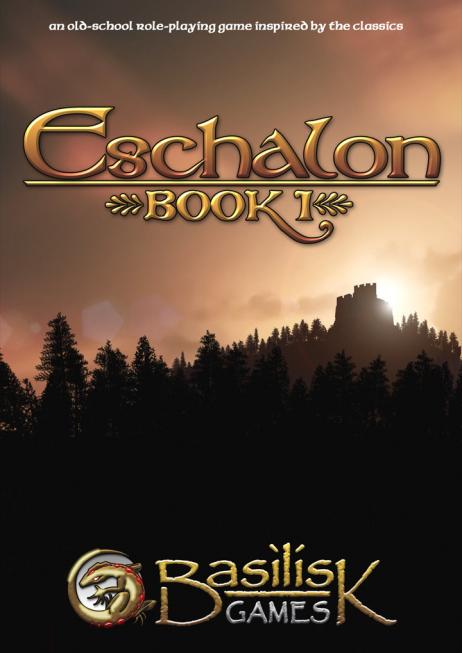Eschalon: Book I Review
-
Category: ReviewsHits: 22916

Article Index
Page 2 of 4
Out to the World No 3D realtime graphics, here, but who cares? Eschalon: Book I uses isometric views and representative 2D object visuals that are detailed, realistically stylized, and pleasing. Animations are good. Little touches, like the differences in strength and color of path lighting based on the method the player character uses (a torch, lantern, or one of a couple of spells), show the quality of the product. (Though I found the dungeons too dark, regardless. Thomas Riegsecker, who runs Basilisk Games, tells me that only 1 out of 10 beta testers reported this, but that they're working on a longterm solution.) Sound is handled effectively to indicate nearby activity. Dialog overlay screens are attractively styled, and adorned with NPC faces. Mousing over your inventory screen brings up appropriate information about each item you've got. The music and sound effects are pleasant if not memorable, and the variety of artwork keeps the game graphically fresh and appealing.
When you enter cities, too, each shop is individually designed, and looks good. My only gripe on this score concerns the displayed content in the gameworld's shops, which is just for show. This is an area where I think Divine Divinity's developers had the right idea: create a series of stackable, small objects, and use them in such a way that the player can see them, and interact with them. Note that ring sitting on a countertop? If you click on it, you should be able to pick it up, and it should vanish from view. There are too many objects on view in Eschalon: Book I that don't exist, whatever your eyes may tell you, alongside others that do.
Once you talk to a merchant you can see their true inventories, which are nicely stocked, if not overwhelming in their variety of goods. Prices are high, twice those that merchants will pay for items, but that's to be expected. You can always improve your Mercantile skill to lower the cost, and/or find a wearable that gives you a bonus in it. Alchemy, too, plays into this system. At low levels, ingredients are more expensive to purchase from a magic shop than finished potions, but as you raise your Alchemy skill, the potions you produce increase in quality. Finally, you're able to sell back potions you make at a good price advantage over the cost of their ingredients, but by then, the items you want to buy are more expensive. You still can't afford them outright, and the cash your potions bring in need to be weighed against the value they provide against foes. This offers tradeoffs as there should be in a well-balanced game.
Kudos to the Eschalon: Book I team, as well, for creating a convincingly non-linear RPG that mixes a direct main plot with a goodly number of side quests, and avoids ramping the difficulty up too much, too quickly, if you decide to take The Grand Tour, instead. Not that you won't be killed easily if you travel too far away, at least if you try and fight or box yourself into a corner. I don't like the too restrictive pathways through the linked map sections, but at least there's a great deal of territory to explore. It's worth exploring, too, because Basilisk has created plenty of mini-encounter spots, where minor collections of monsters hang around a body or treasure chest. Sometimes their proximity is well-motivated, but at other times it feels rote, with the monsters obviously placed to furnish the obligatory challenge.
Another annoyance is the burden of long distance travel in the game. You spend a lot of your daytime hours the only period when I, at least, could actually see much of what was going on wandering to and from quest sites, to town shops, and back. The presence of teleportal locations help somewhat, but they were far too few. And invariably, when I left a spot in a complex, winding dungeon, it was difficult to remember exactly my way back, or important features along the way that I wanted to recall, later. The ability to notate via the automap function would have greatly assisted this.


